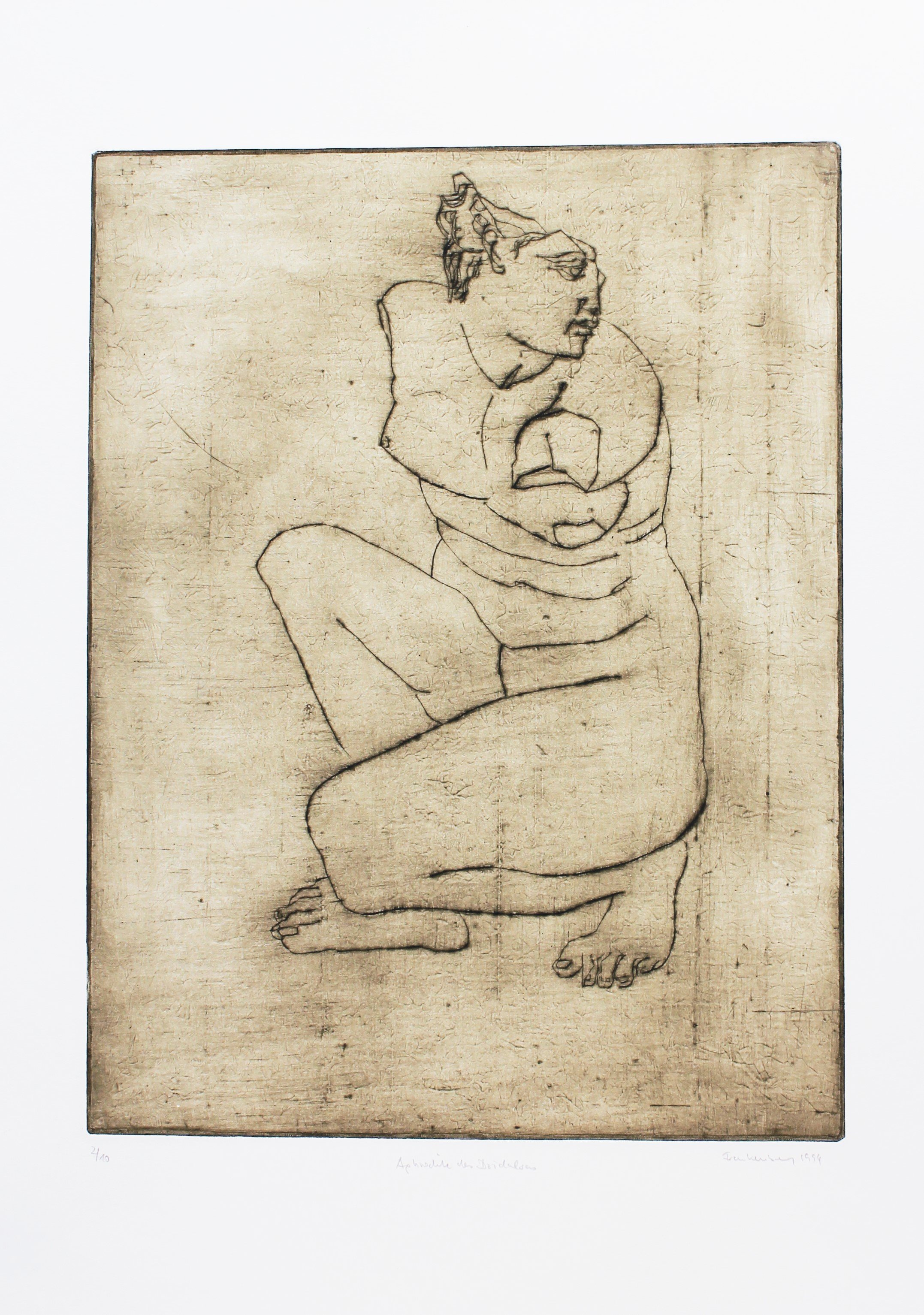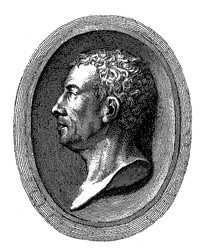Es handelt sich hier um eine moderne Transformation und Interpretation einer antiken Skulptur der Aphrodite, die ursprünglich wohl von dem Bildhauer Doidalses gefertigt worden war. Dieses Thema erschloss sich Frankenberg vor dem Gipsabguss in der Kieler Antikensammlung.
Aphrodite ist in einer knienden, kauernden Position dargestellt. Ihr rechter Fuß steht fest auf dem Boden, der linke Fuß berührt nur mit den Zehen den Boden. Ihr linkes Bein befindet sich in einer niedrigeren Position als das aufgestellte Rechte. Ihr Bauch wirft durch die kauernde Körperhaltung Falten auf. Ihre Brust ist entblößt. Aphrodite blickt über ihre linke Schulter nach hinten, sodass ihr Gesicht in Profilansicht zu sehen ist.
Die Darstellung ist nur mittels schwarzer Linien umrissen.
bez. u.l.: 2/10
bez. u. mittig: Aphrodite des Doidalses
sign. u. dat u. r.
en

